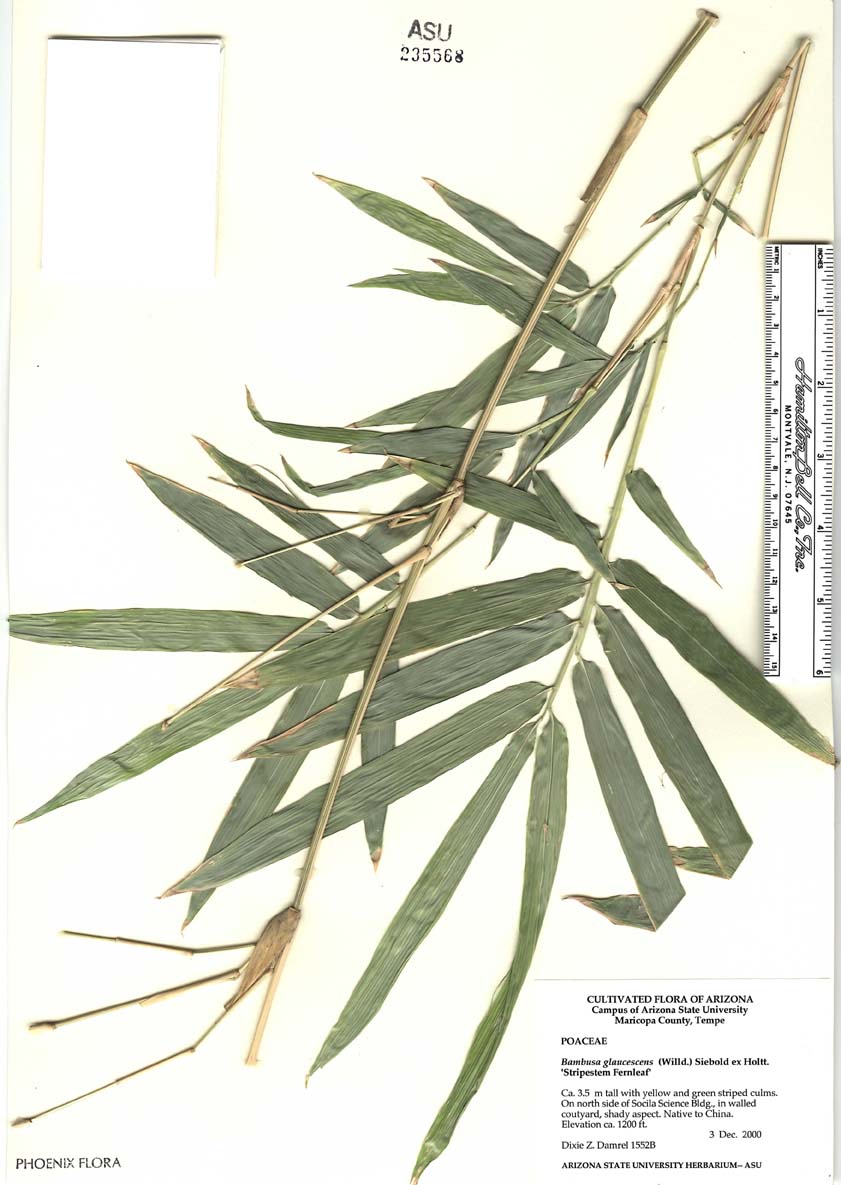Bambusa
|
Family: Poaceae |
Plants usually arborescent, in well defined or rather loose clumps; rhizomes pachymorphic, with short necks. Culms 0.5-30(35) m tall, 0.5-18(20) cm thick, woody, perennial, usually self-supporting; nodes not swollen; supranodal ridges obscure; internodes terete, usually thinly covered initially with light-colored wax. Branch complements usually with a dominant primary central branch and 2 smaller co-dominant lateral branches, usually similar at all nodes; bud scales 2-keeled, thickened, initially closed at the back and front; branches all subtended by bracts, higher order branchlets at the lower nodes sometimes thornlike. Culm leaves usually promptly deciduous, initially lightly waxy, sometimes with short, stiff hairs, subsequently losing the wax and becoming glabrous; auricles usually well developed; fimbriae usually present; blades triangular to broadly triangular, usually erect. Foliage leaves: sheaths usually deciduous from the lower nodes of the branches, persistent at the distal nodes; blades to 30 cm long, to 6 cm wide, not distinctly cross veined. Inflorescences usually spicate, rarely capitate, bracteate; prophylls 2-keeled, narrow. Pseudospikelets 1-5 cm, with 3-12 florets; disarticulation above the glumes and below the florets, rapid; rachilla internodes usually long. Glumes several, subtending the buds; lemmas narrowly ovate, acute, unawned; paleas not exceeding the lemmas, 2-keeled, not winged; anthers 6; ovaries usually suboblong; styles short, with (2)3-4 plumose branches. 2n = 56-72. Name a Latinized form of bambu, a local name of Malayan origin. |

